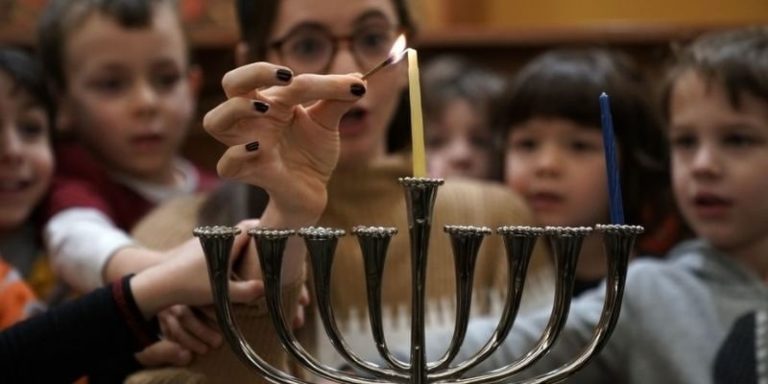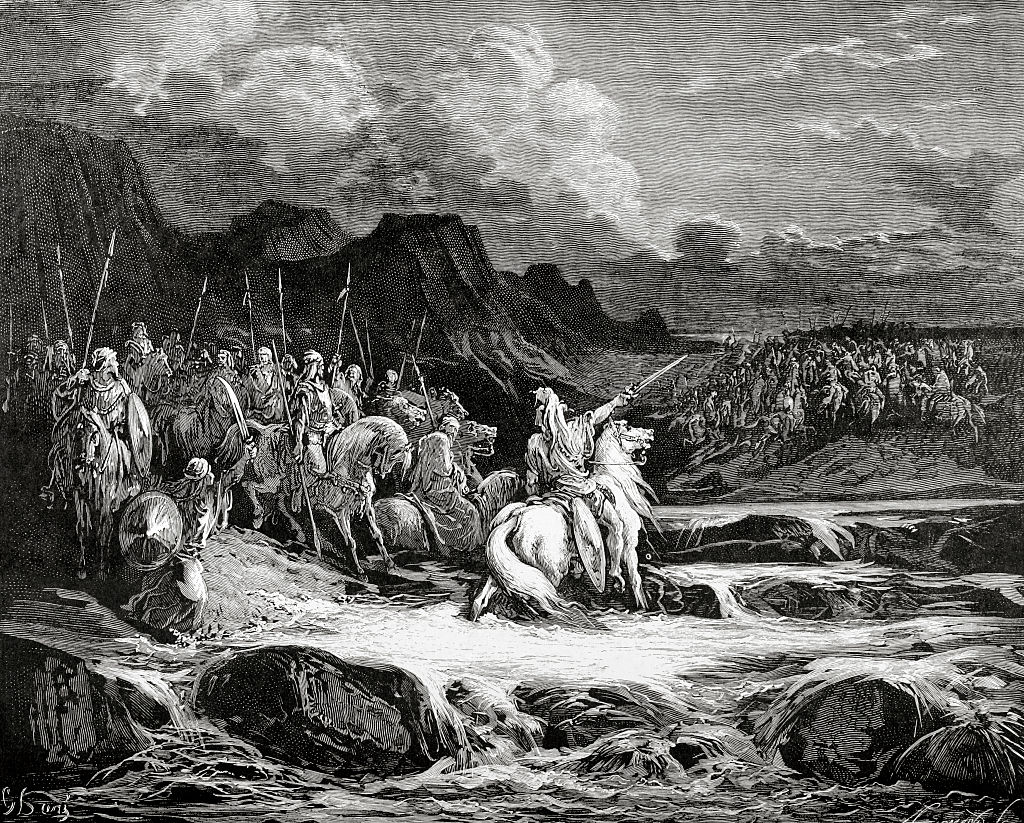Proof of the Hanukkah Story Found?
A recently discovered fortress near Jerusalem may prove the legend true.
By: Sarah Cowgill | December 3, 2021 | 576 Words

(Photo by Alex Wong/Getty Images)
The Jewish festival of Hanukkah happens annually around the beginning of December, though the dates change each year. Just in time for the holiday, archaeologists in Israel say they may have found evidence supporting the ancient story of Hanukkah.
Last month, Israeli archaeologists found the ruins of a fortress that was destroyed during the Maccabean Jewish revolt 2,100 years ago. The excavation was in Lachish Forest, 40 miles southwest of Jerusalem. The stronghold is approximately 50 feet by 50 feet and fortified with stone walls nearly ten feet thick. They found a variety of artifacts: weapons, charred wooden beams, and ancient coins. But archeologists also believe they have discovered details that can prove the Hanukkah miracle existed.
The Story of Hanukkah
In 168 BC, the Seleucids (a Greek empire), governed a large portion of the Middle East. The Seleucid king, Antiochus IV Epiphanes, targeted Jews and outlawed traditional Jewish religious practices, going so far as to deface the Temple in Jerusalem. The Jews fought back against their oppressors. A small army known as Maccabees regained control of the Temple.
Jews claim God was on their side during the battle, and that he helped them win against the better armed and more numerous Seleucids. When the Maccabees went to light the Menorah (a candle holder with seven branches) in the reclaimed Temple, there was only enough oil to burn it one time. But that one-day supply lasted for eight days, and traditional Temple rituals could be performed. According to the Jewish faith, it was a sign their fight was righteous and just.
Hundreds of years later, the observance of the holiday is worldwide, with the lighting of the Menorah for eight days in many cities, including those in the United States.
The word Hanukkah means “dedication,” and the holiday is celebrated each year to commemorate the Maccabees’ victory to reclaim their Temple.

Engraving of Maccabees going into battle (Photo by: PHAS/Universal Images Group via Getty Images)
Why Is This Important to Israeli Jews?
Archaeologist and dig directors Saar Ganor, Vladik Lifshitz, and Ahinoam Montagu say the discovery of the fortress supports the story of Jews prevailing over the Greeks.
A few years after the Maccabees had defeated the Seleucids, the Jewish Hasmonean kingdom launched another attack on a Greek city in the area. It was led by John Hyrcanus, the ruler of Judea and brother to Judah Maccabee, who had led the attack against the Seleucids.
The archaeologists argue the fortress was built by the Seleucid Greeks to protect against the Hasmonean armies. They suggest the fortress failed and was badly damaged in an attack. A statement from the directors reads:
“It appears that we have discovered a building that was … erected by the Hellenistic [Greek] army commanders to protect the large Hellenistic city of Maresha from a Hasmonean [Jewish] offensive. However, the finds from the site show that the Seleucid defenses were unsuccessful; the excavated building was badly burnt and devastated by the Hasmoneans.”
“Our theory is that the Seleucids blocked the entrance of the fortress and fled to the city as their enemies approached,” said Montagu. “As the Hasmoneans reached the structure, they set it on fire.”
Zeev Elkin, Israel’s minister of construction, housing, and heritage, found the discovery “impressive” and said it “demonstrates the history of our great and wonderful land and the story of Hanukkah.”
















